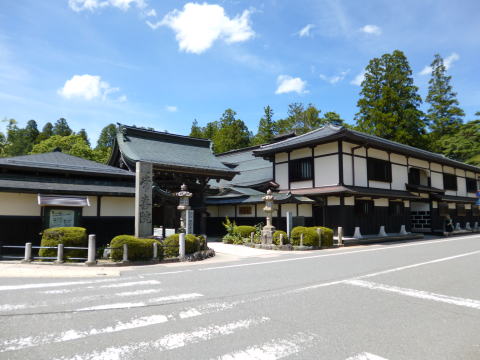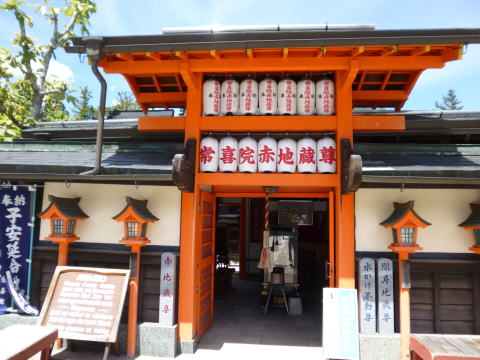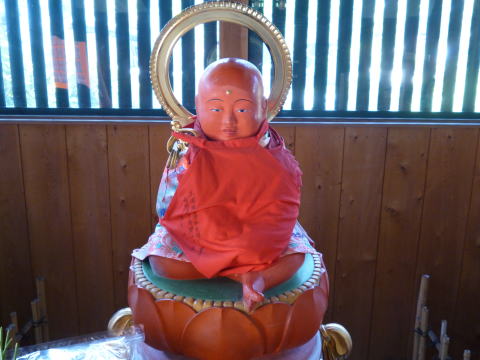Jokiin temple ![]()
Jokiin Temple is located to the north of
Daishikyokyo Church in Minamidani, Mount Koya, Wakayama Prefecture.
According to temple legend, it was founded
by Doko Daishi Jichie, one of Kukai's ten greatest disciples, and was later
re-established in 1156 by Busshubo Shinkaku, who built a hermitage there one
night.
Shinkaku was a scholar monk of Todaiji
Temple in Nara, and learned esoteric Buddhism practices (methods of practice)
from the Ono schools and the Hojuin schools, and founded the Jokiin school, a
branch of the Hirosawa school.
In the past, Jokiin was a temple of Hijiri school
and located in Ojōin Valley, but in the Edo period it became a temple of the
Gyōnin school, and was moved to the west of the entrance to the Jōdōin Valley
in the Odawara Valley, and in 1870, it was moved to its current location
together with Raigoin and Mimuroin.
The current location is the former site of
Saishoin Temple, and the temple's name is managed by Jokiin Temple.
The principal image, a wooden seated Jizo
Bodhisattva statue, is designated as an Important Cultural Property of Japan.
Joki-in Azekura storehouse was built by
Gyonin school during the Kan'ei era and is said to have been moved from the
grounds of Toshogu Shrine at Kozan-ji Temple. It is a designated cultural
property of Wakayama Prefecture.
It is built in the Hogyo-zukuri style and
is divided into an inner sanctuary and an outer sanctuary. The inner sanctuary
is a storehouse with thick mortar walls, and a statue of Fugen Enmei Bosatsu is
enshrined as the principal image.
The principal image of the Goma hall,
Daiitoku Myo-o, was donated by Kuroda Nagamasa in joy after the 22nd Henkaku
Risshi offered prayers at Buzen Kokura Castle in 1591.
In the Jizo hall next to the temple gate,
Eho Jizo (nicknamed Red Jizo, Benihaku Jizo, Tama Jizo) and other statues are
enshrined.
Take the bus from Koyasan Station on the
Nankai Koya Line and get off at Kongobu-ji-mae bus stop, then it is a 2-minute
walk from the stop.


